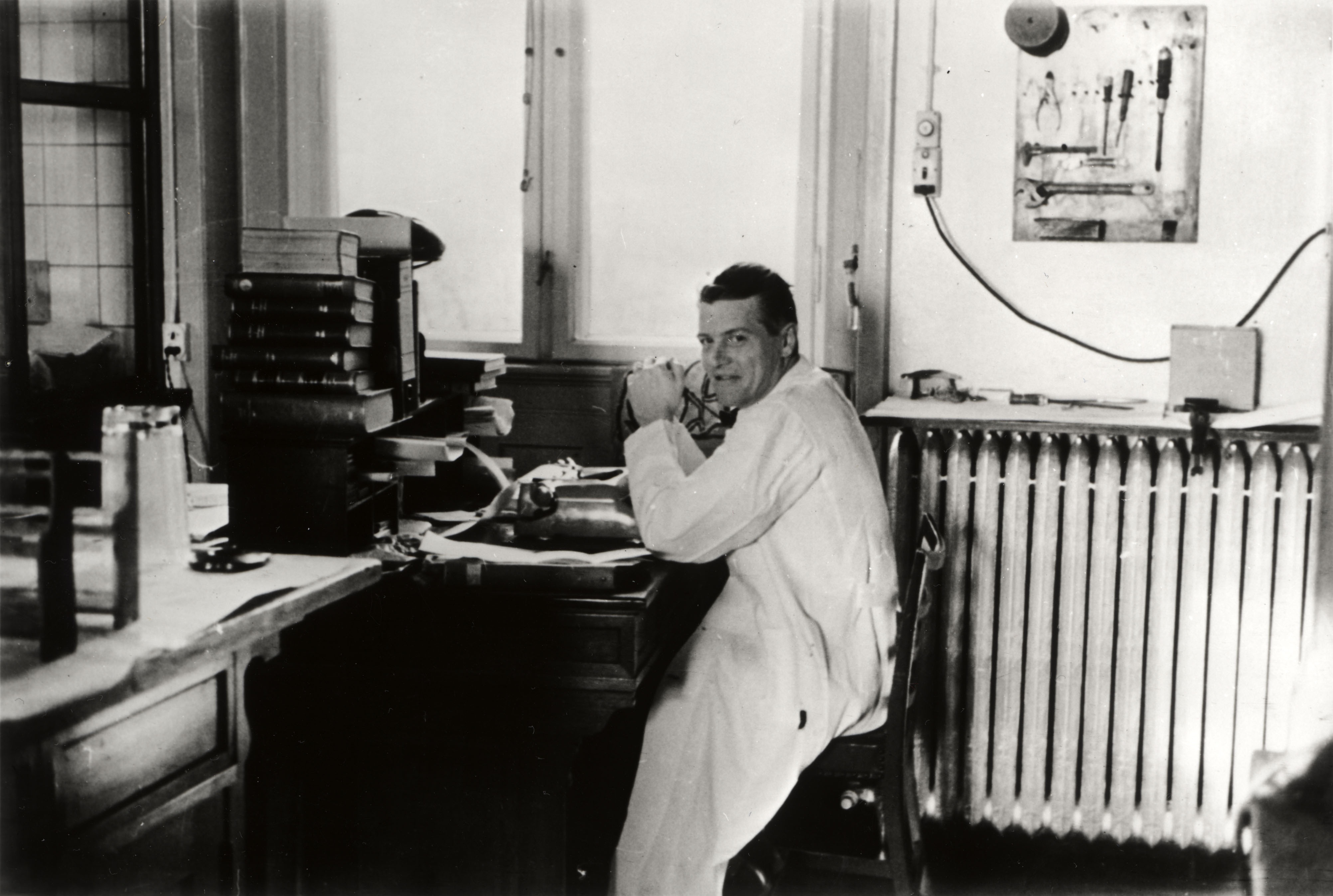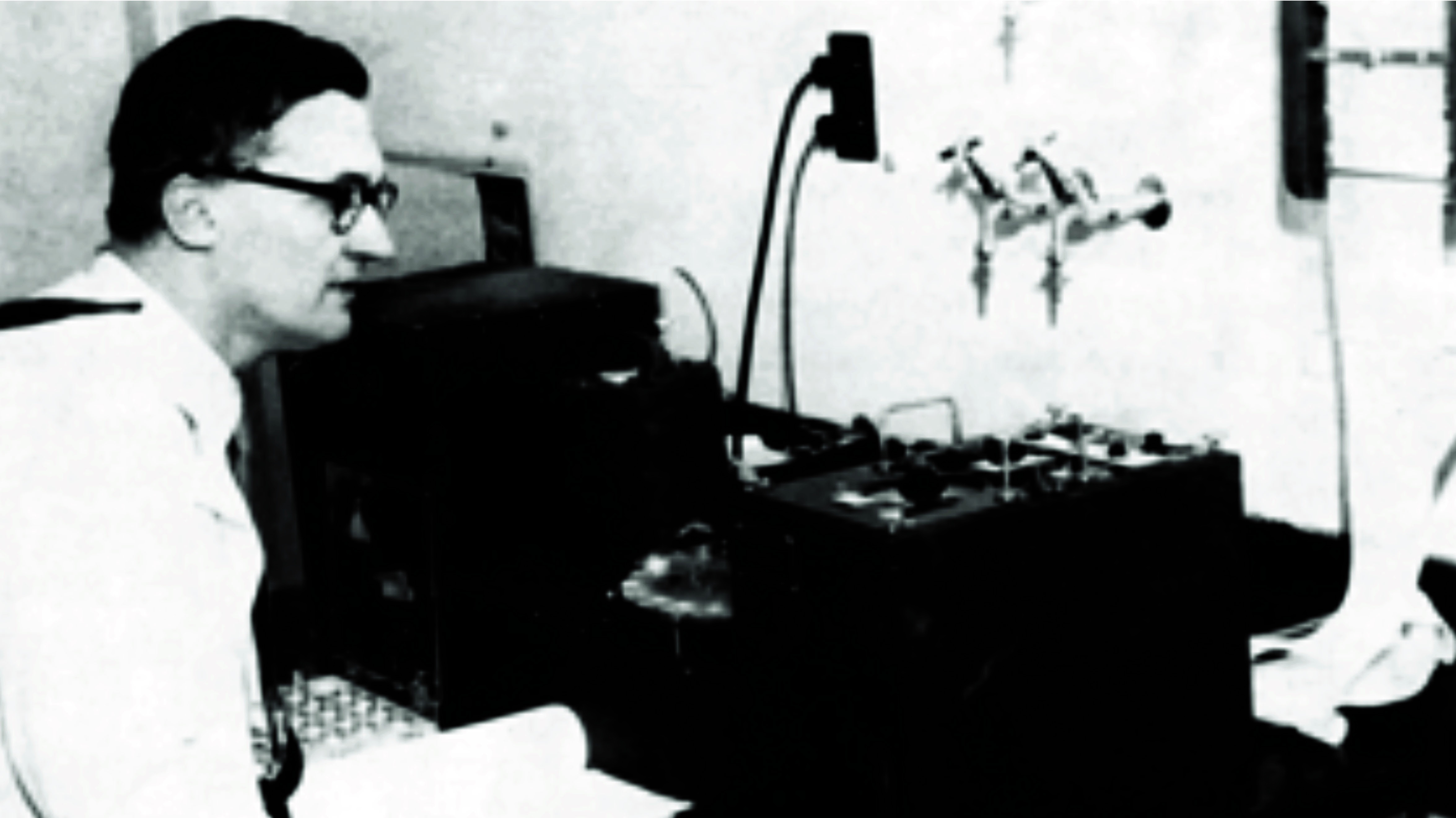The Molecular Basis of Evolution
"My pop wanted me to be an engineer, but science, which was second best, was as close as I could come…"
- —NIH Record, July 21, 1981
The Path to NIH
Swarthmore College, 1937National Library of Medicine
In 1916, Christian Boehmer Anfinsen, Jr, was born in Monessen, Pennsylvania, near Pittsburgh. His father was a mechanical engineer; both he and his wife, Sophie Rasmussen Anfinsen, were Norwegian immigrants. In 1933, Anfinsen was admitted to Swarthmore College on a scholarship, where he studied chemistry and played football while working as a waiter in the dining hall. He then went on to the University of Pennsylvania, obtaining an M.S. in organic chemistry from the University of Pennsylvania.
Anfinsen was fortunate to spend formative time overseas early in his career. Particularly important was an American Scandinavian Foundation fellowship in Kaj Linderstrom-Lang’s Carlsberg Laboratory in Copenhagen, Denmark, in 1939. The Carlsberg Laboratory was a natural fit for the son of Norwegian immigrants. Although World War II cut his fellowship short in 1940, Anfinsen developed new methods for studying proteins while in Copenhagen.
University of Pennsylvania, 1939National Library of Medicine
Anfinsen during his fellowship at Carlsberg Laboratory in Copenhagen, Denmark, 1939-40.National Library of MedicineAnfinsen received his Ph.D. in biochemistry from Harvard University in 1943, where he became a faculty member after undertaking malaria research during World War II. While working with Arthur Solomon, Anfinsen perfected a technique he employed in his later work: using radioactive isotopes to examine the activity of amino acids.
Hugo Theorell's Laboratory
In 1947, Anfinsen spent a second productive period abroad, this time in Hugo Theorell's laboratory at the Medical Nobel Institute in Stockholm, Sweden. Theorell would win the 1955 Nobel Prize in Physiology or Medicine for his work on enzymes, proteins that catalyze or accelerate biological reactions.
Hugo Theorell with his Geiger-Muller counter for detecting radioactivity in his laboratory at the Medical Nobel Institute in Sweden.Courtesy of Karolinska Instituet
Overview
Content Tools
ThemeBuilder





